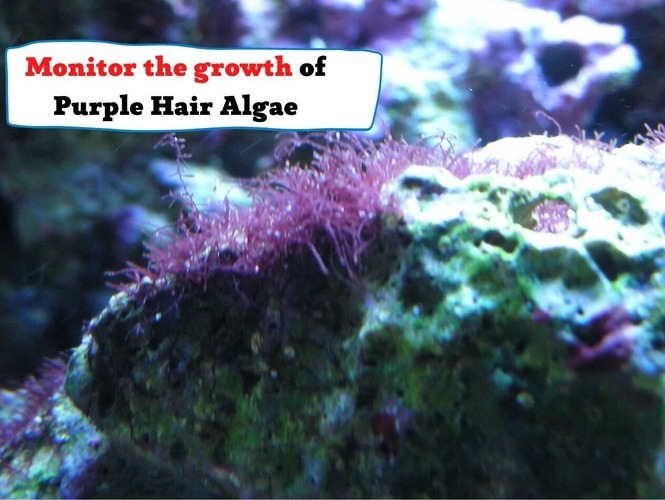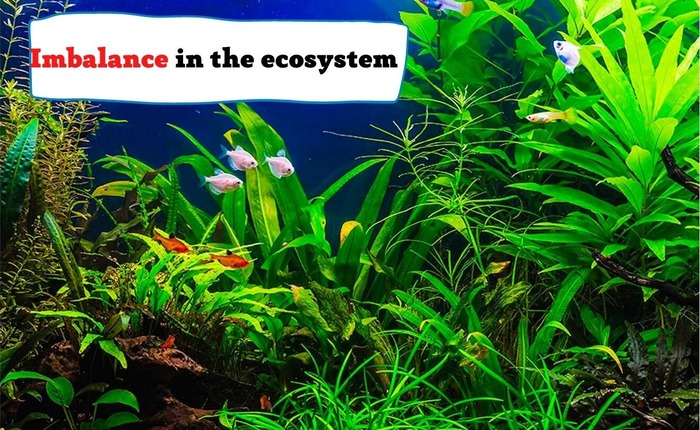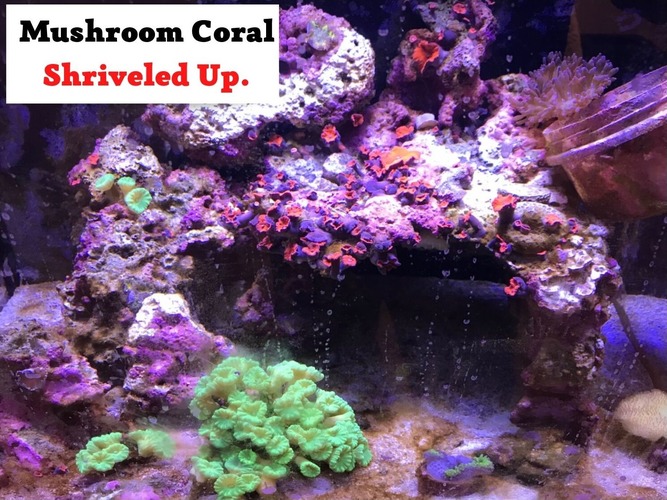
Are your rocks in an aquarium filled with Purple Hair algae? This must be a weird addition for you and would be the only reason you are here searching for the growth of Purple Hair Algae. This could pose an even more significant concern if you have other organisms living in the tank. Even if there are no other living things, an unwanted alga in your tank is something not acceptable by most aquarium owners. We assume you are one of them.
This article covers the details about the purple hair algae on your rocks and the reasons that can trigger it.
- What is Purple Hair Algae?
- Types of Purple Hair Algae
- Need to monitor the growth of algae in the tank
- Fish and other creatures’ health
- People Notice it
- The beauty of the tank
- How does Purple Hair Algae grow?
- Why does purple hair algae grow?
- Laziness
- Too Much Fish
- Non-appropriate filtration media
- Imbalance in the tank’s ecosystem
- Extra love for the fish
What is purple hair algae?
Purple hair algae are not actually the algae. It is a form of bacteria most commonly known as cyanobacteria. You’ll find it interesting that the purple hair algae you see on the rocks are amongst one of the primitive forms of life on the Earth. This means that you have something in your tank that can be dated back to 3.5 billion years.
One of the other names of purple hair algae is the red slime algae. So, you might not find all the information about the annoying purple hair algae with this particular name.
Different types of Purple Hair Algae
Below are the main types of Purple Hair Algae that you can commonly find in different tanks. These include:
- Blackish green to blue-green
- Orange-yellow to reddish-brown
- Deep purple to entirely black
So, next time any of these creep into your beautiful tank, you can be sure that there will be similar reasons for causing the growth of all these forms. Probably you can take the same steps over again to get rid of any of it.
Why do you need to monitor the growth of Purple hair algae?

Well, suppose you aren’t much into fish or aquarium. You might be considering leaving all the hassle of understanding the reasons and solutions for taking the purple hair algae out of your aquarium. After all, it is adding extra color. But unfortunately, you cannot let it happen.
The growth of the purple hair algae in the saltwater aquarium is one of the common problems you can face if you have a fish tank in your homes or commercial spaces. You’ll have to manage the growth of the cyanobacteria or the purple hair algae to ensure the health of the other organisms and the beauty of your tank.
Here are some specific reasons:
Other creatures live there too
If you have fish or other living organisms in the aquarium, you must worry about them at least. The algae growth in your tank will create an unhealthy environment for these creatures. They would probably die in a few weeks, considering the rapid speed with which Purple Hair Algae grow.
Others might notice it
Even if you don’t have other creatures in your tank at the moment and consider it safe to let the algae grow, let us tell you that you might not have an interest in the water tanks or aquariums. Still, not everyone is visiting your place would be so ignorant. You would not want to establish yourself as someone who does not care about the fish, water, or surroundings. You can include a long list of items you’ll be tagged with.
Your tank would not look beautiful
Even when your tank is empty, you can still expect it to look beautiful and to the aesthetics of the room where you have placed it. Suppose it is covered with purple hair algae. In that case, it won’t look beautiful instead except for the water to start stinking in some time, making it unbearable for you to even look at the tank from very close.
How does Purple Hair Algae grow?
The algae start with a small patch, but it would not take long before this purple hair alga spreads to the entire tank. So, when you start noticing the Purple Hair Algae, you will not have much time to take remedies for its betterment.
Why does purple hair algae grow?
So, now after establishing that you need to know more about the Purple Hair Algae, let us highlight some of the prominent causes of the growth of the Purple Hair algae:
You are lazy
You might tend to differ, but one of the prominent reasons that lead to algae growth in your tank is that you are not proactive enough to deal with your aquarium correctly.
You have either delayed changing the water for too long or have no idea that you have to clean the skimmers of the tank thoroughly too. Apart from both these general maintenance processes, there are many more things to handle when you have an aquarium at your place under your responsibility. You have to go through a lot!
Too much fish
Well, you are a lover of every fish type, but your aquarium isn’t large enough to handle all of it, then this could be another cause of the growth of Purple Hair algae.
The higher the number of fish, the higher would be the waste. This means that you’ll have a lot of extra nitrate and phosphate present in the tank, which provides an efficient medium for the growth of Purple hair algae.
Non-appropriate filtration media
One of the other reasons for the problem under discussion is the presence of non-appropriate filtration media. You might not have replaced the necessary filtration systems of your tank, or the capacity of such filtration products is not enough to handle the load of the tank.
The result would be the presence of extra food for the algae. And all you need for the growth of the algae is the right amount of nutrients and the temperature. That is literally it.
Imbalance in the ecosystem

Even if your filtration system is working appropriately and you have already thought of the upper limit of the fish that you can add to the tank, you still cannot add all the fish in your tank together. Has this been your plan? We are so sorry for ruining it; this is high time when you can understand it and avoid the growth of the Purple Hair Algae.
Adding much fish in the tank together means that you’ll have to add more food. The filtration system would have to bear the high load suddenly; this can cause an imbalance in the aquarium’s ecosystem. The result will again be more nitrates and phosphates in the water, and you know what will happen next.
Extra love for the fish
If you have been busy lately and to compensate for your absence from your pets, you want to feed them extra. You are paving the way for the Purple hair algae to enter your tank. How? We understand that your intention would only be to spend some great time with your fish and feed them with your own hands so you can mend for the lost time.
But the only thing you would be doing will be adding in sources to produce a higher amount of nitrates and phosphates (yes again!), and you know what will happen as a result.
What’s the solution for all the nitrates and phosphates that get in your tank?
In other words, you are now looking for the solution to prevent the purple hair algae and the other algae forms, right? Well, it isn’t that difficult. You have to manage the number of nutrients your tank will have at a particular moment. For maintaining so, you’ll have to manage the input and the output side together.
In simple language, it means that you cannot crowd your fish tank with many fish varieties. You’ll have to add fish in it gradually so you can understand the nature of your tank, the number of fish it can entertain, and the extra material your tank can process out.
So, there would be no nitrates or phosphates to fuel your tank.
Summing up
By keeping the number of fish in control and obviously maintaining the hygiene standards, you can keep the purple hair algae and other sorts of algae out of your tank.
What does that mean? You can get healthy fish in a beautiful-looking aquarium. Even if you don’t have fish, corals, or such creatures in your aquarium, it will still look beautiful. It will establish you as a hardworking, fish-loving, and hygienic individual. You have to maintain the image for obvious reasons, isn’t that right?
- Pleco Not Eating. Main Reasons Your Pleco Is Starving - February 21, 2022
- Foxface Fish Sting: Any Danger? And What To Do To Relieve Pain? - February 20, 2022
- White Stuff Coming Out Of Snail – Dangerous? Should You Worry About It? - February 19, 2022




